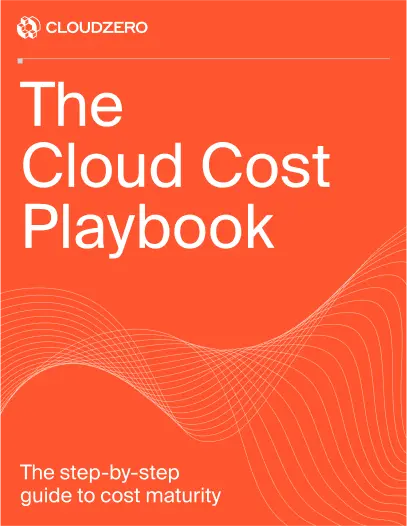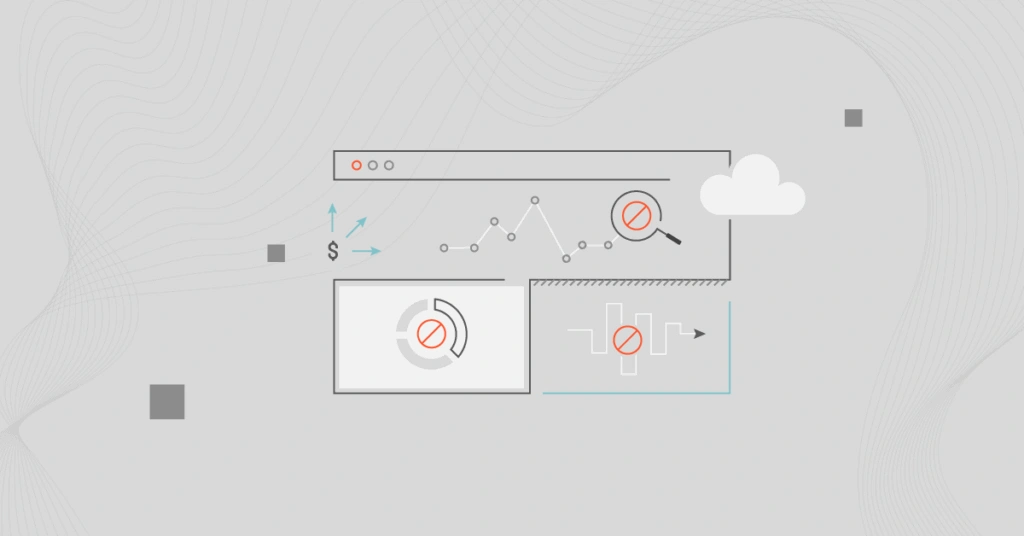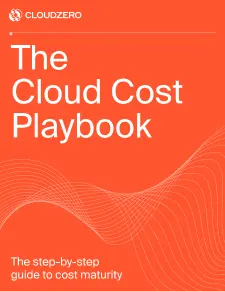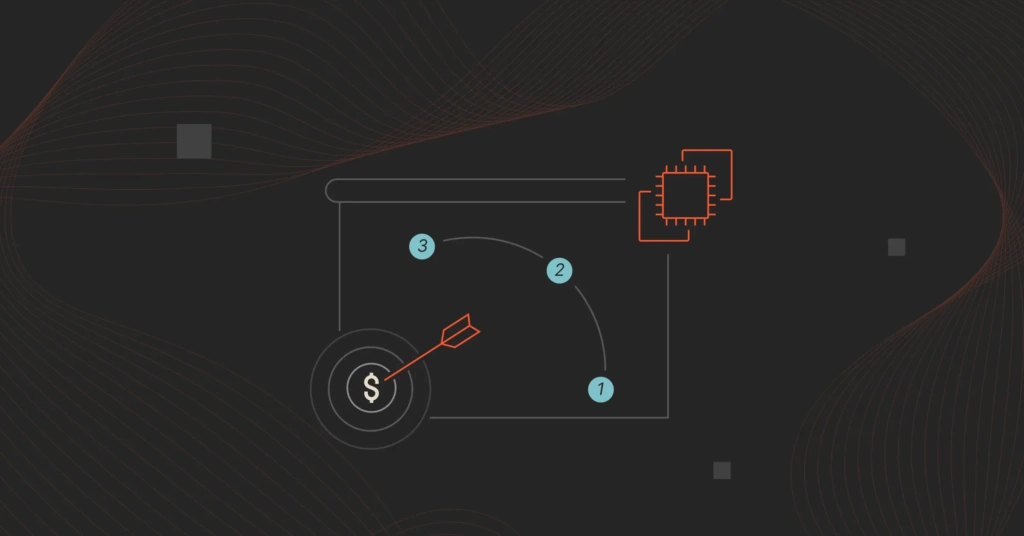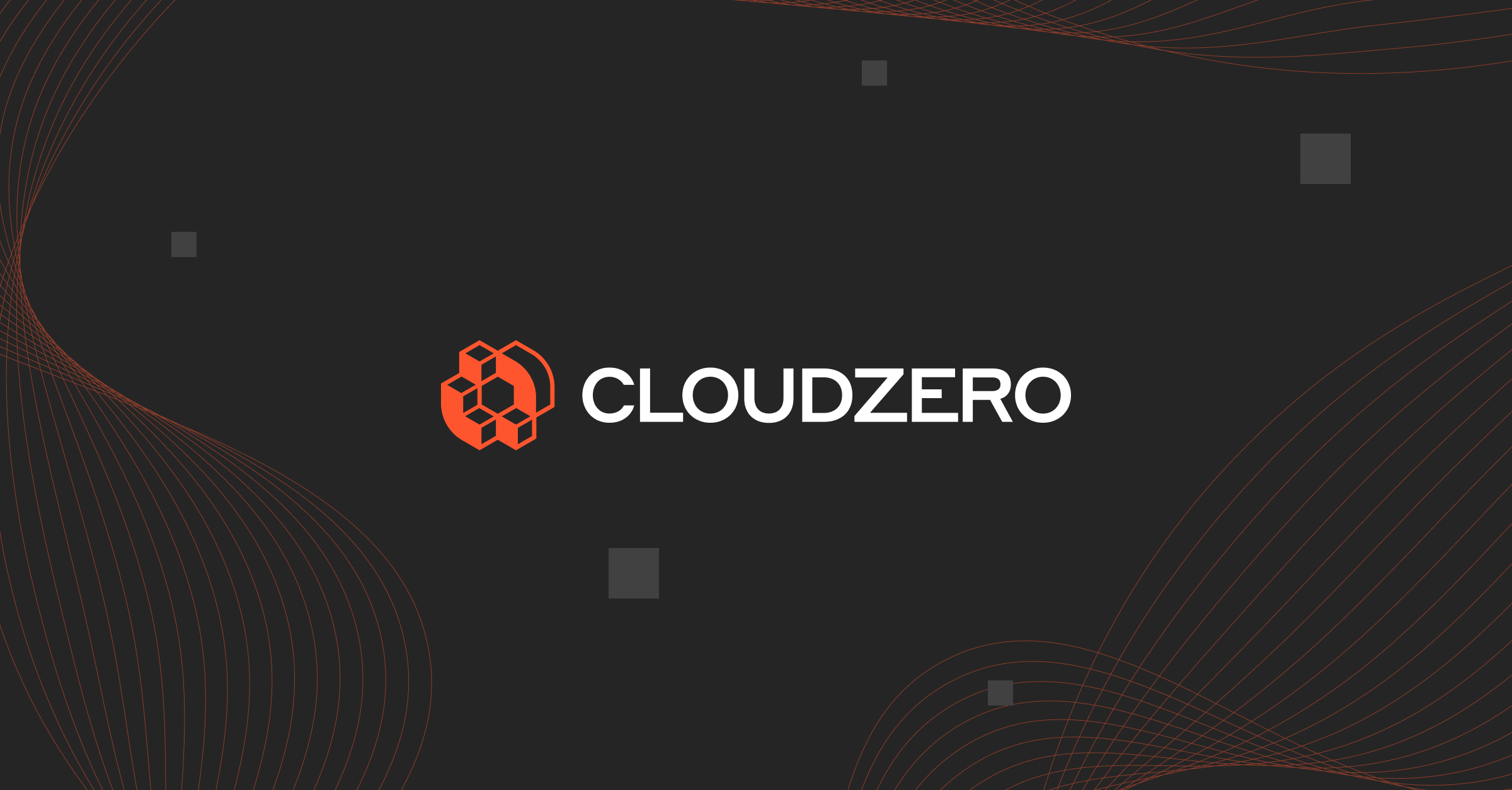Your CFO just asked why cloud costs jumped 40% last quarter. You pull up your dashboards, confident in your tagging strategy, until you realize 30% of your spend is labeled ‘unallocated’.
This is the moment every FinOps team dreads. It reveals a hidden complexity that even mature organizations struggle with: the challenge of accurately allocating cloud costs in a way that’s both granular enough to be actionable and trusted enough to drive decisions.
Cloud cost allocation isn’t just about tagging resources. It’s about building a system that can answer increasingly sophisticated questions as your FinOps practice matures from “what are we spending?” to “what’s our cost per customer per feature?”
(Or, as CloudZero CTO Erik Peterson writes, “The key question is no longer, ‘How much did we spend?’ It’s now: ‘Was it worth it?’”.)
It’s about building a system that can answer increasingly sophisticated questions as your FinOps practice matures from “what are we spending?” to “what’s our cost per customer per feature?” Or, as CloudZero CTO Erik Peterson writes, “The key question is no longer, ‘How much did we spend?’ It’s now: ‘Was it worth it?’”.
Cost Allocation Attributes: The Foundation That Makes Or Breaks FinOps
Every dollar of cloud spend originates from a service, resource, or transaction. But to make that dollar make sense to the business, you need context. That’s what cost attributes provide.
In FinOps, cost attributes are used to categorize cloud spend: tags, labels, account IDs, projects, environments, business units, SKUs, services, and more.
Attributes aren’t flat. They’re nested, often in a hierarchy or matrix. A single EC2 instance might belong to an application, which belongs to a service, which belongs to a product line, which belongs to a business unit. Miss one level of that hierarchy, and your entire allocation model breaks.
These let you answer key questions like:
- Who is spending what?
- What project or application is this cost tied to?
- Is this a production workload or a dev experiment?
- What business outcome does this support?
- Is this good spend or bad spend?
These aren’t academic questions. They’re the foundation for cost allocation, chargeback, unit economics, and decision-making.
The FinOps Foundation consistently ranks cost allocation and accurate tagging as top priorities for FinOps maturity. CloudZero stresses that without reliable cost attribution metadata, organizations struggle to map cloud spend to products, features, and customers in a way that informs business decisions.
When you connect cloud spend to unit economics — that being cost per customer, cost per transaction, or cost per feature — cost allocation transforms from a technical exercise into a business conversation.
Cost allocation powers the visibility and accountability FinOps promises, but can come at a cost if not executed properly.
The Three Pillars Of Mature Cost Allocation
Successful cost allocation rests on three interdependent pillars that build on each other:
- Granularity: Fine-grained breakdowns by team, service, environment, or product that enable you to answer specific business questions.
- Accuracy: Data that reliably reflects actual usage, rates, and shared costs, i.e. the foundation of trustworthy reporting.
- Trust: Reports that stakeholders believe and use to make decisions, earned through consistent accuracy and meaningful granularity.
Here’s where organizations typically struggle with each pillar:
1. Granularity challenges: the tagging chaos problem
Achieving deep visibility means leaning heavily on resource-level metadata, usually tags. But tagging is messy. Misspellings, inconsistent formats, and missing values are common. Without rigorous tag hygiene, your dashboards may show precise numbers that are quietly wrong. The FinOps Foundation’s allocation working group highlights tagging inconsistency as one of the most common pitfalls in cost attribution.
Example: A global SaaS company tries to calculate cost per customer by pulling from resource tags. But 15% of their resources aren’t tagged at all, leaving them with misleading dashboards and contentious finance reviews.
That 15% of untagged resources represents, for example, $2.3 million in annual spend that can’t be charged back to product teams, forcing the platform team to absorb costs they didn’t incur.
2. Accuracy challenges: the processing paradox
To get to “fully loaded” costs, teams must adjust for discounts, amortized reservations, support fees, and shared infrastructure. These adjustments are correct, but can obscure the connection to raw usage data. Engineers see a number that doesn’t match the bill and stop trusting it. Many teams are building custom data pipelines to reconcile the differences, according to the 2025 State of FinOps Report.
Example: An enterprise retailer produces highly accurate monthly cost allocations, but engineers abandon the reports because they can’t reconcile amortized RI charges with their day-to-day usage, eroding trust in the data.
3. Trust challenges: the simplification trap
To maintain credibility, many FinOps teams simplify. They roll up costs by account or project, avoiding the fragility of tags. Trust isn’t only about accurate numbers. It’s about predictable numbers. When engineers see their costs swing 50% month-to-month due to amortization adjustments they don’t understand, they stop looking at the dashboards altogether.
One Fortune 500 CISO told us: “I’d rather have consistently wrong numbers I can adjust for than perfectly accurate numbers that change their methodology every quarter.” This builds trust with finance, but sacrifices the granularity engineers need to optimize workloads or understand unit costs.
Example: A digital media company reports costs by AWS account to maintain CFO confidence. But product teams can’t tell whether their $400K monthly transcoding costs are driven by new features, experiments, or customer growth.
These aren’t trade-offs. They’re symptoms of immature cost allocation processes. As you improve accuracy, trust naturally follows. As you add meaningful granularity, you answer more business questions. The challenge is building the system to get there.
Why Cost Allocation Breaks (And Why It Matters Now)
Modern cloud billing data is a big data problem. Large organizations can process billions of line items per month, each with hundreds of columns of metadata. This includes everything from region and SKU to usage type and discount code.
Tags and labels are just one part of the picture. Hierarchical dimensions (like AWS accounts or GCP projects) are critical too. But no cloud provider fully standardizes these across services, making multi-cloud FinOps especially hard.
Read: Introducing Dimension Studio: Easier, Faster Cost Allocation In CloudZero
In fact, the 2025 State of FinOps shows that 63% of teams now track AI/ML spend. That’s up from 31% the year before, intensifying the dimensional complexity.
GPU workloads don’t just cost more. They also multiply dimensional complexity. A single training job might span multiple accounts, use spot and on-demand instances, leverage shared storage, and cross charge to three different teams. Traditional tagging strategies collapse under this weight.
The result: your cost data may be technically complete, but practically unusable. Engineers don’t trust the dashboards. Finance doesn’t get the context it needs. And the FinOps team becomes the translator in the middle, rebuilding reports manually, explaining inconsistencies, or patching broken dimensions on the fly.
Understanding why dimensions break is step one. Step two is recognizing where your organization sits in the maturity journey.
The Maturity Journey: From Basic Visibility To Unit Economics
FinOps teams follow a predictable maturity path:
Stage 1: Basic Visibility: Teams start by answering “what are we spending?” using account-level rollups. Trust is established through simple, verifiable numbers.
Stage 2: Initial Attribution: Teams add basic tagging to answer “who is spending what?” Accuracy becomes critical as stakeholders question allocations.
Stage 3: Granular Insights: Mature tagging and automation enable “what drives our costs?” Granularity expands to answer specific business questions.
Stage 4: Unit Economics: Full cost allocation connects to business metrics: “what’s our cost per customer?” All three pillars work together: granular, accurate data that stakeholders trust to make decisions.
At each stage, teams iterate through an inform-optimize-operate cycle, improving their allocation system until the cost of further refinement exceeds the value of additional insights.
Advanced teams eventually invest in automation, tag enforcement, and custom tooling to strengthen all three pillars simultaneously. Even then, perfection is rare. The maturity journey is about iterating until the cost of further refinement exceeds the value of additional insights. The most mature organizations know when to stop optimizing and declare their cost allocation ‘good enough’ for business needs.
Breaking Through The Complexity: A Practical Path Forward
The hidden complexity of cost allocation isn’t insurmountable. Here’s how mature teams navigate it:
- Strengthen trust first: Ensure stakeholders believe the numbers, even if they’re high-level.
- Invest in tag hygiene: Automate tag policies, use tooling to catch drift, and enforce standards early.
- Layer in accuracy gradually: Introduce fully loaded costs once stakeholders are comfortable with base visibility.
- Aim for unit economics: Shift conversations from raw cloud costs to metrics like cost per customer or cost per transaction, as CloudZero advocates.
- Recognize the maturity journey: Understand that granularity, accuracy, and trust build on each other, not against each other.
The goal is to build a cost allocation system that grows with your organization’s needs, stopping when additional complexity no longer delivers value.
Start By Naming The Pain
The hidden complexity of cost allocation is the quiet force behind broken reports, untrustworthy forecasts, and endless tagging remediation. It’s not about trade-offs; it’s about recognizing where you are in the maturity journey.
By naming it, you make it visible. You give your team language to ask: Where are we in our maturity journey? Do we have enough granularity to answer business questions? Is our accuracy building trust, or eroding it?
Don’t jump to solutions. Not yet. First, sit with the problem. Map where your current tooling fails. Look for the dimension debt you’ve accumulated, the accumulated cost of poor tagging decisions and inconsistent metadata practices. And prepare to challenge what you’ve accepted as normal.
If your dashboards are granular but your CFO doesn’t trust them, or, if they’re trusted but too high-level to drive action, you’re experiencing the hidden complexity of cost allocation.
Understanding and managing cost allocation isn’t a side quest. It’s the core challenge of FinOps. And it’s time we treated it like one.
In 2025, with cloud spending ballooning and AI workloads growing rapidly, the FinOps Foundation reports that reducing waste is the top priority for over half of organizations. Solving the allocation complexity won’t be easy, but ignoring it guarantees you’ll keep burning cash in the shadows.
Your next dashboard review is coming. Will you have the granularity, accuracy, and trust needed to answer the questions? The answer determines whether you’ll control your cloud costs, or explain why you can’t.
